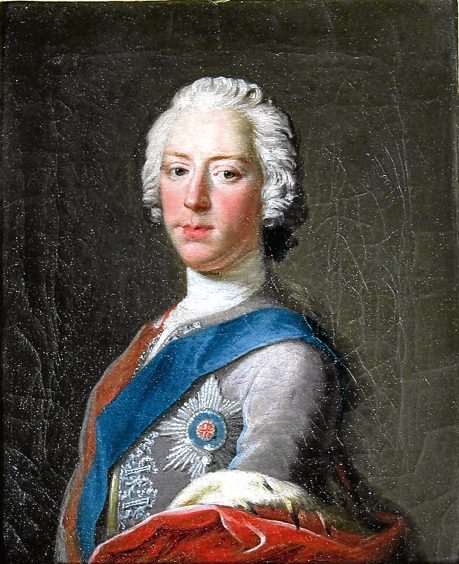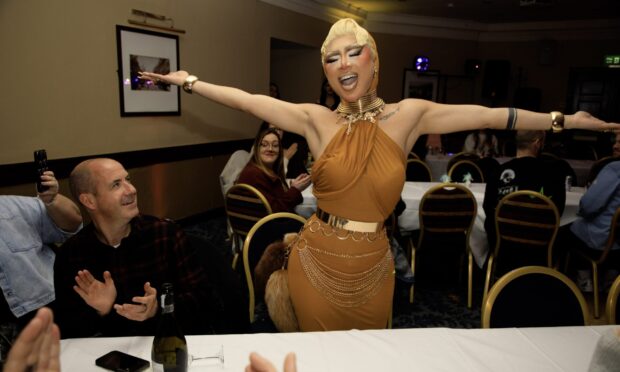Six ‘Untold Stories’ will be at the heart of the new Perth Museum when it opens in 2024.
The lesser-known lives of Perthshire characters will be told in six large standards, or banners.
They are being specially created with the help of today’s modern-day artists and residents.
The banners will explore the impact of the clearances and the Jacobites, as well as slavery and the industrial revolution.
The Untold Stories gallery will share a space with the Stone of Destiny when the £27.2 million museum opens in the refurbished City Hall in the spring.
Anna Day, culture public programming manager for Perth and Kinross Council, said: “This unique project has given us an opportunity to delve into the stories and history of Perth and Kinross and tell those tales in a new way, with six really exciting artists.
“The standards will speak to our past, but all the projects have a relevance and tell us something important about today too.”
The Courier has been given a sneak preview of what the artists are working on…
Blair weaver telling Stanley Mills story
Now a tourist attraction, the spectacular Stanley Mills was built in the 1780s with support from the English cotton baron Richard Arkwright. His links to the slave trade have made him a controversial figure in recent years.
Many of its workers had been cleared off the adjacent Nairne estate by the Duke of Atholl. Its ancestral owners were Jacobites who forfeited their land and titles after 1746.
Their story is being told by master weaver and tartan designer Ashleigh Slater, from Blairgowrie.
He has held drop-in workshops and sessions in care homes to teach people the skill of weaving.
When the Clearances came to Glen Quaich and Amulree
This banner will tell the story of the Clearances of communities from the area of Glen Quaich near Amulree in the 1830s.
People were being moved off the land across much of Highland Scotland to make way for sheep at that time. Often homes were destroyed so they could not return. Many left Scotland altogether.
The landowners in highland Perthshire at that time were the Duke of Atholl and the Marquis of Breadalbane.
Artist, maker and educator Emily Smit-Dicks is working with communities in Canada and Perthshire.
They are creating a quilted banner for the new museum from reclaimed textiles.
Shining a light on the Damn Rebel Bitches
The stories of the men who fought in the Jacobite rebellions of the 1700s are well
documented. The role that women played less so.
This embroidery banner will pay tribute to some of the key women who fought for the Jacobite side – and suffered the consequences.
It’s being led by Nikkita Morgan, an Irish political textile artist based in Scotland.
She predominantly uses needlework to capture intricate stories.
Joseph Knight’s path to freedom began in Perthshire
Joseph Knight’s freedom from slavery is one of the most celebrated court cases in Scottish legal history. But its link to Perthshire is less well known.
Knight was taken from Guinea as a child and brought to Scotland to work as a personal servant on John Wedderburn’s Ballindean estate.
The sheriff of Perthshire ruled in 1774 that Wedderburn could not force Knight back to work for him, since slavery was not recognised in Scots Law. But it took a failed appeal by Wedderburn to the Court of Session in Edinburgh before Knight was eventually released from slavery four years later.
Nkem Okwechime will be holding open screen printing workshops for people to drop in and learn more about how to make a screen print – and about Joseph Knight.
“There are no images of him,” he said. “And after his trial was won, he disappeared, hopefully to lead a quiet and happy life.
“This is an exceptional opportunity to celebrate a very important but somewhat unknown standard bearer for freedom in Scottish history.”
Public invited to Burning of Strathearn sessions
The Burning of Strathearn saw Jacobites burn down farms and villages across the area after the inconclusive battle of Sherrifmuir in 1715.
The reasons given were to ensure government forces had no way of travelling north, since there were no supplies available to them.
However, some believe the burning happened because of personal animosity and the disappointment of the Jacobite leader, Mar, that he had not been given more support at the battle.
This harrowing episode is being tackled by illustrator Laura Darling, who is based in Dundee.
She is holding workshops at Strathearn Arts in Crieff on October 7 and 21, from 10am – 1pm both days. To book a place, email aday@pkc.gov.uk.
Alexander Robertson of Struan: Perthshire’s own comic book hero
Alexander Robertson of Struan (1670 – 1749) was a clan chief, a Jacobite soldier and poet. In 1715, he led 500 of his clansmen in the Jacobite rising before being captured in 1716.
He was rescued by fellow Jacobites and escaped to the continent. But by 1731, he was back in Scotland and rallied his clan to join the 1745 uprising in support of Prince Charlie.
Following the defeat of the Jacobite rising in 1746, his tower house at Dunalastair, near Pitlochry, was burnt down by Government soldiers and his estates were forfeited.
After his death in 1749, a collection of his poems was published in 1752.
His portrait is in the collection of the National Galleries of Scotland.
Artist and illustrator Dylan Gibson, who lives and works in Highland Perthshire, will depict Robertson’s life in dramatic comic book form.


















Conversation